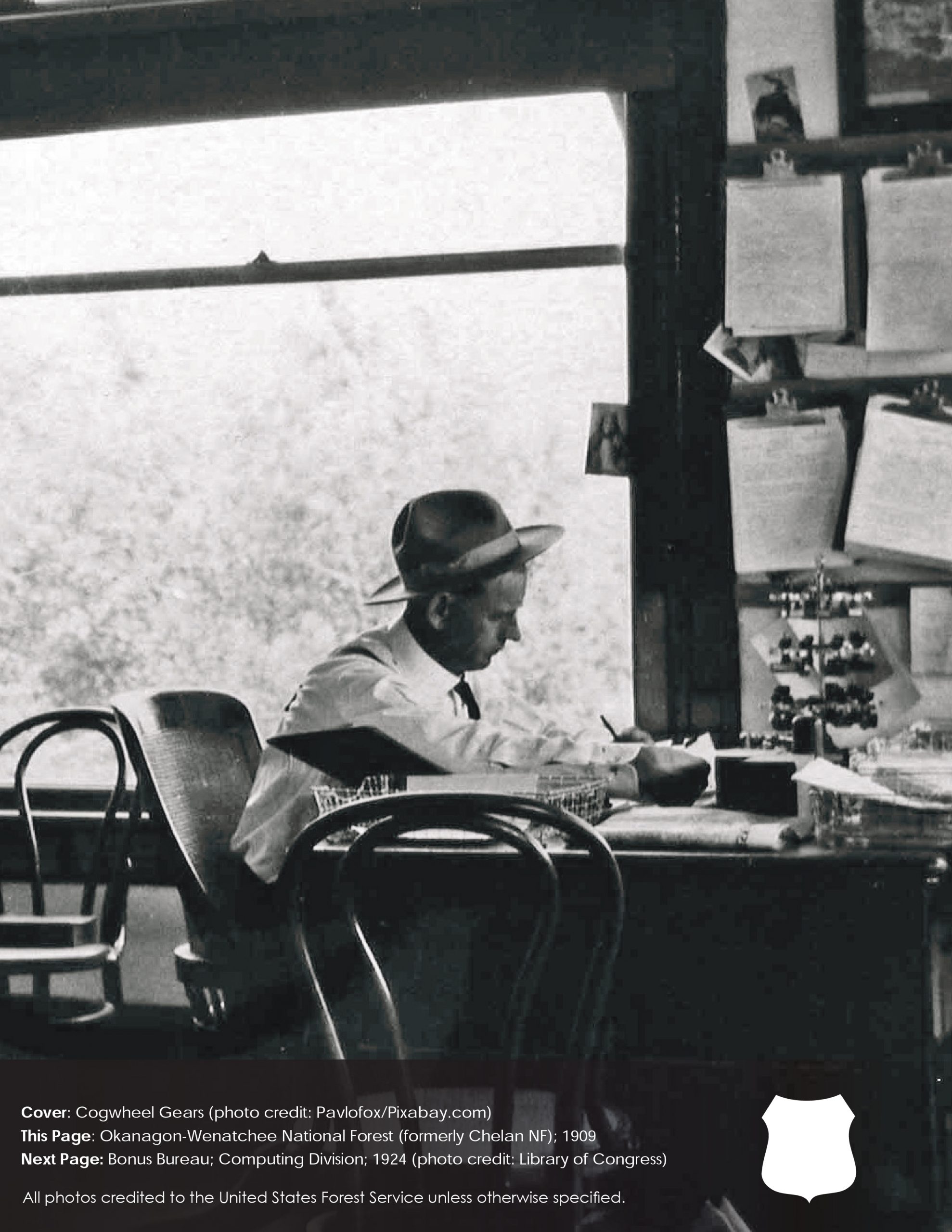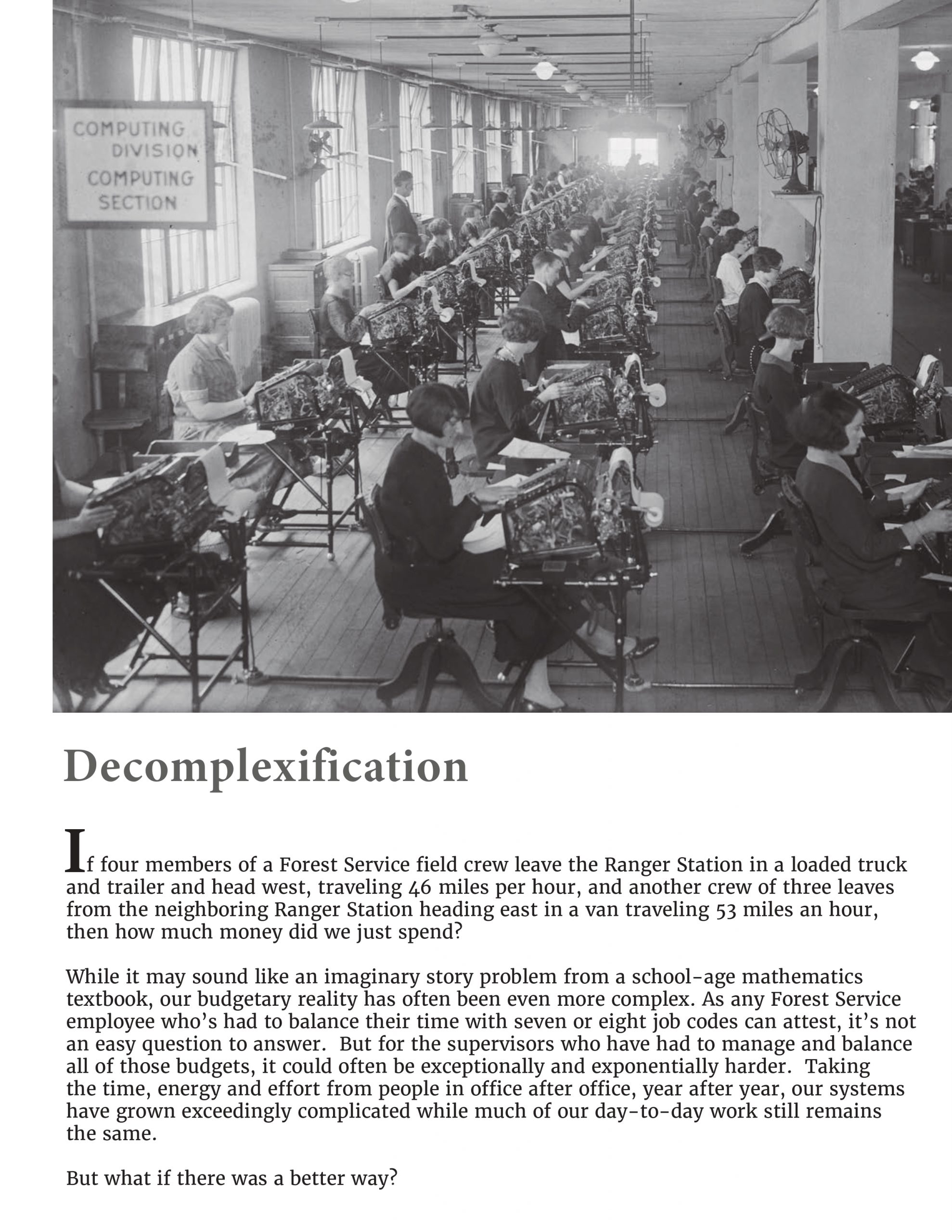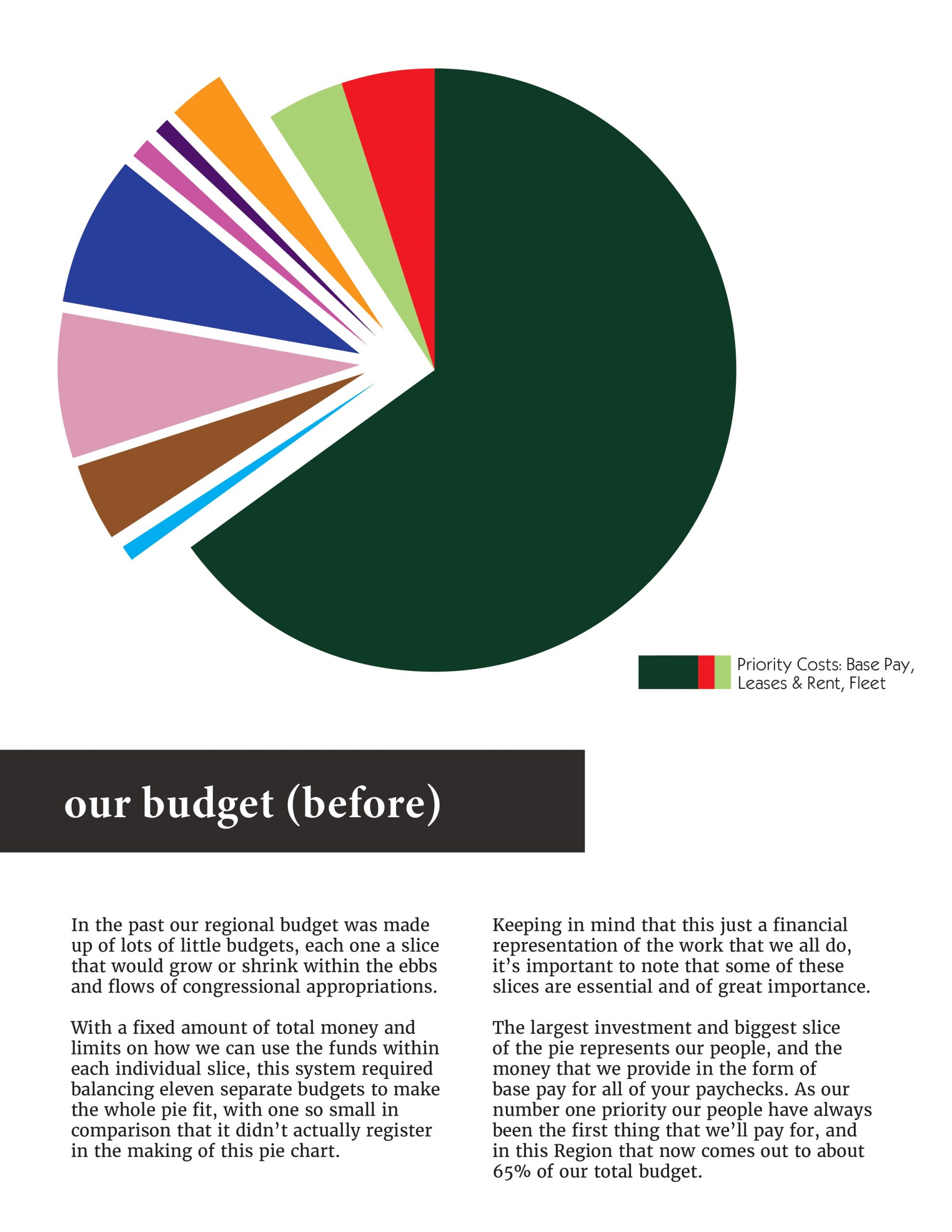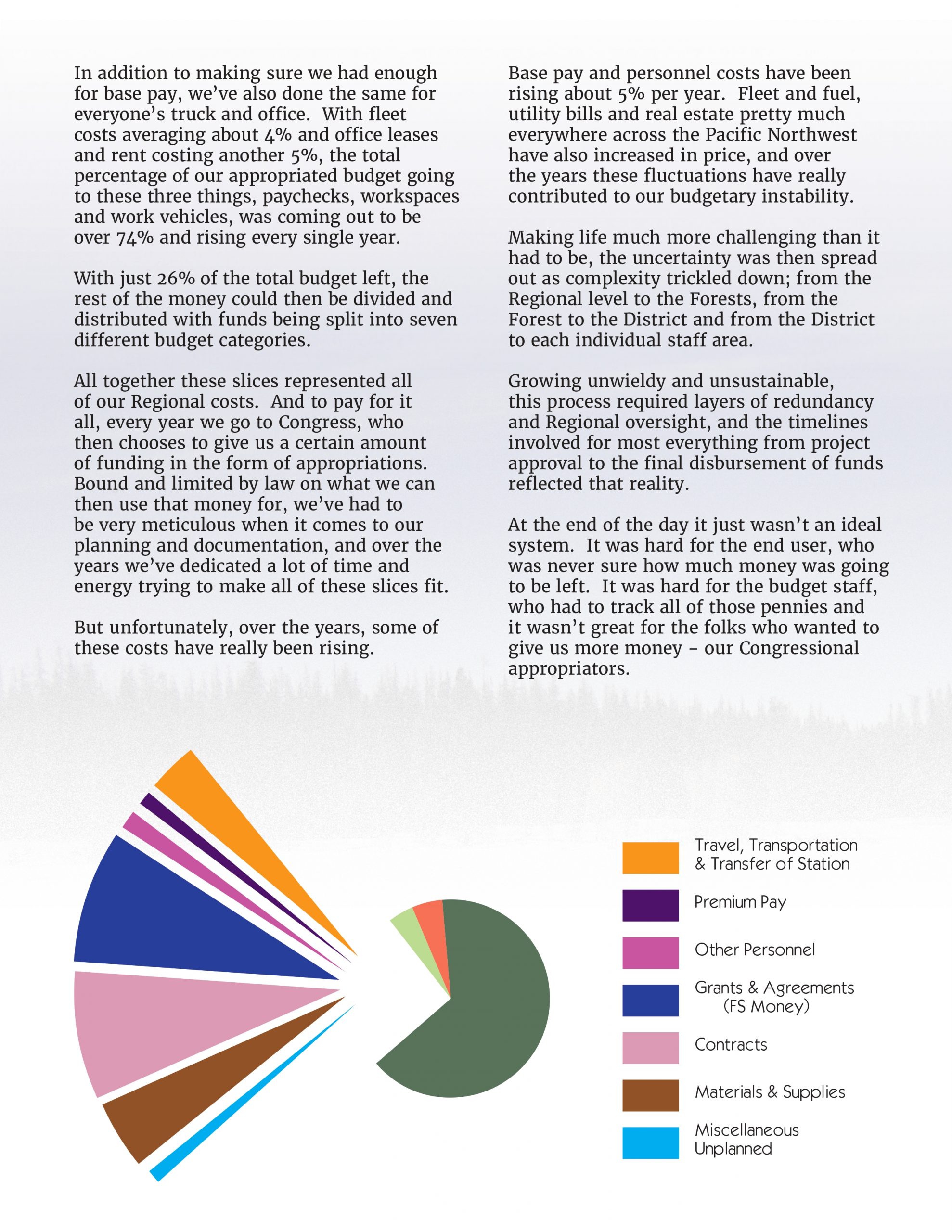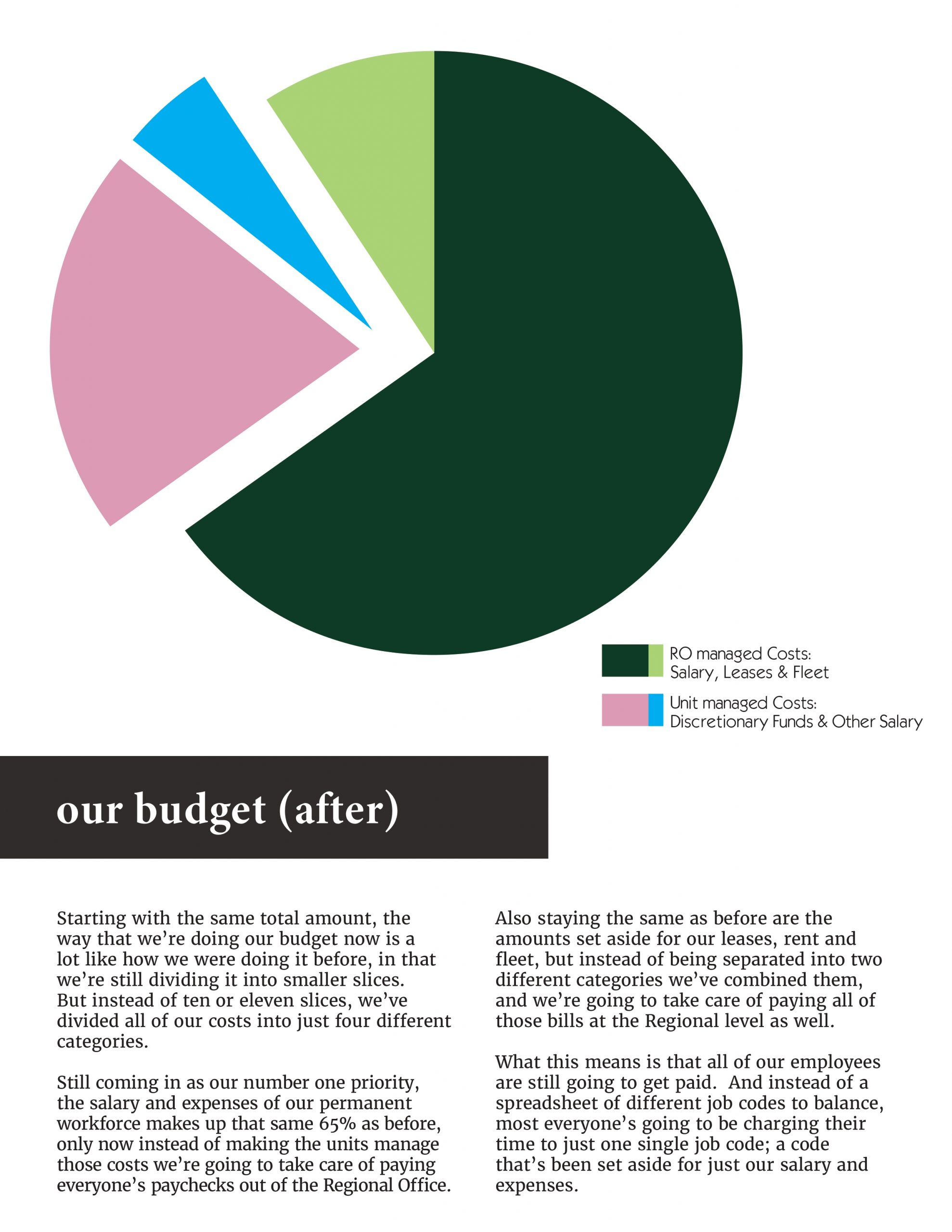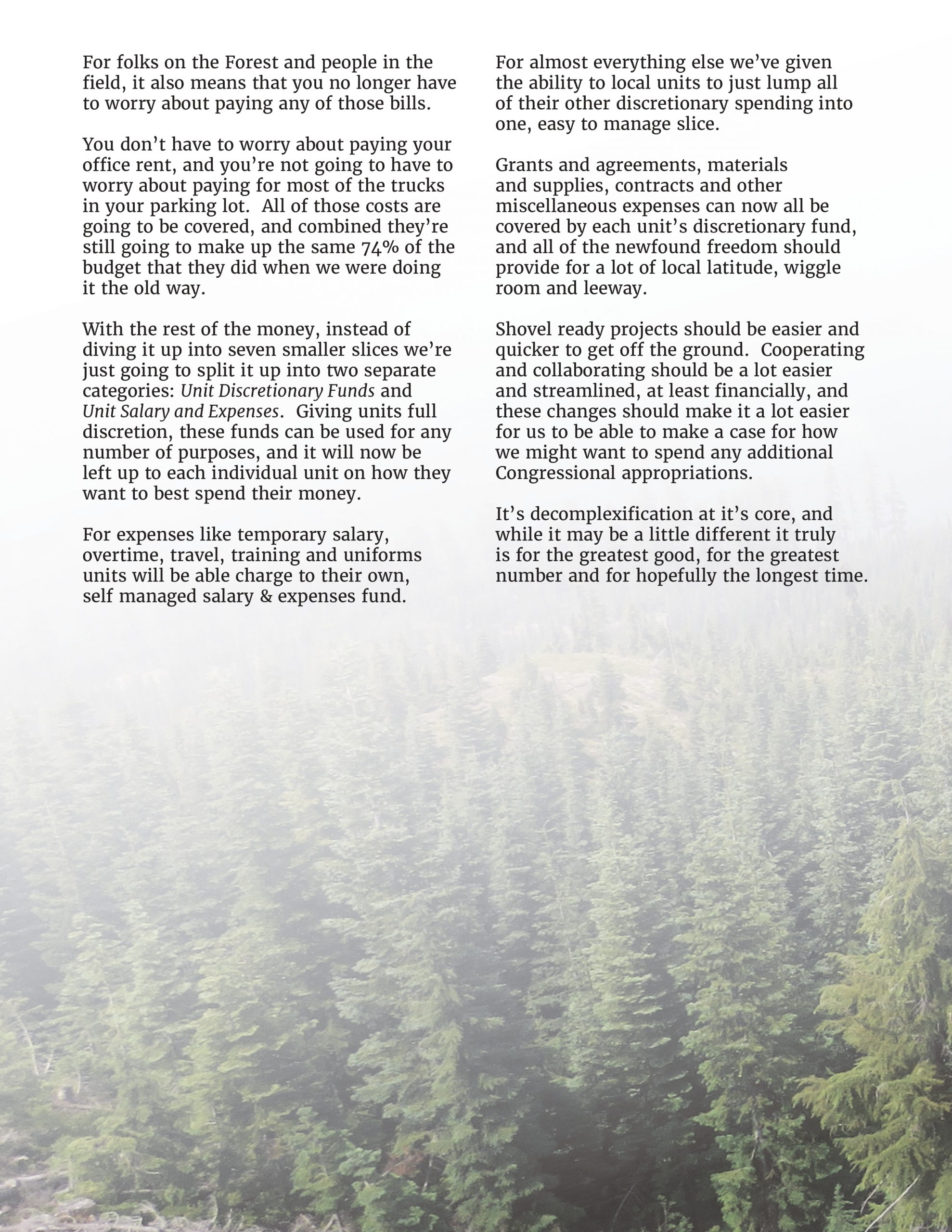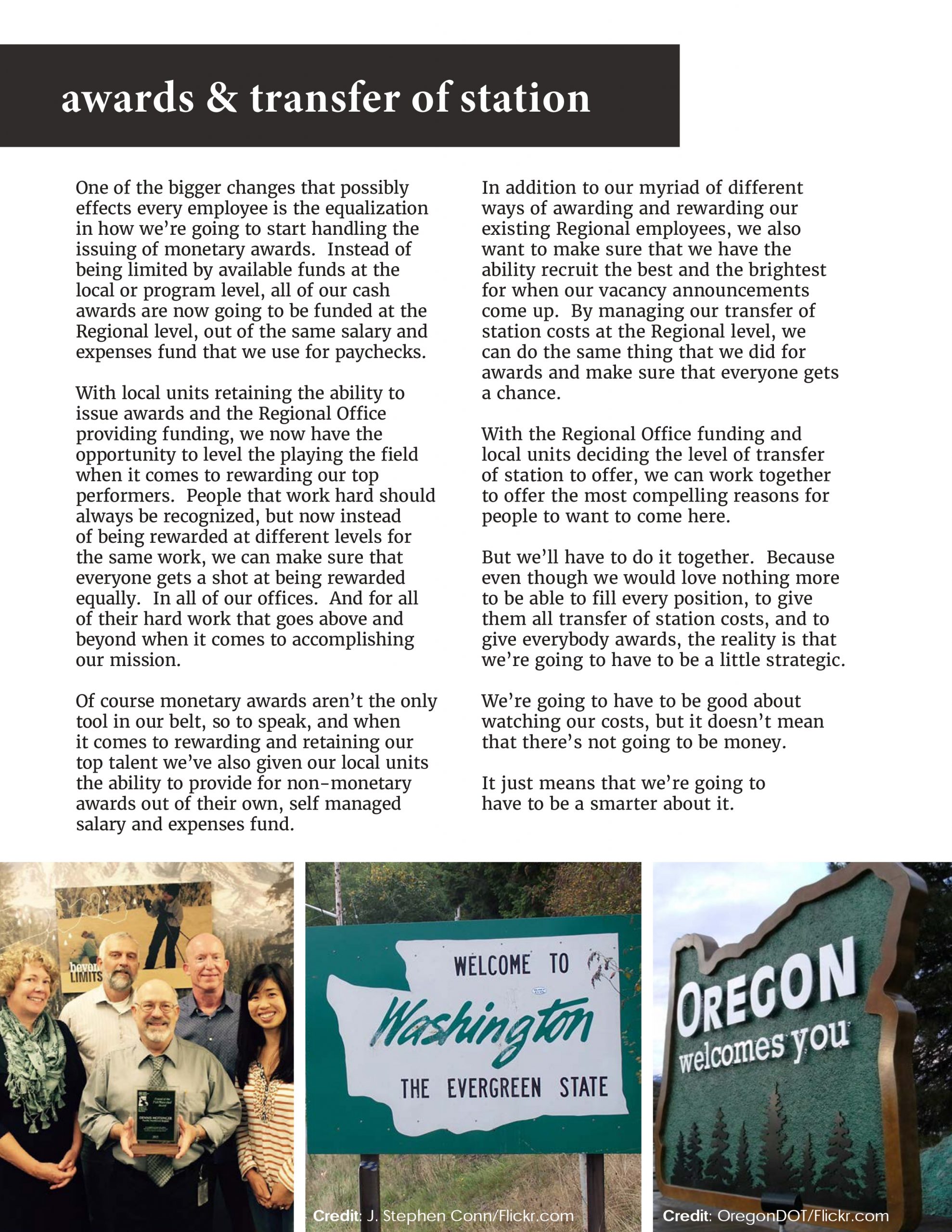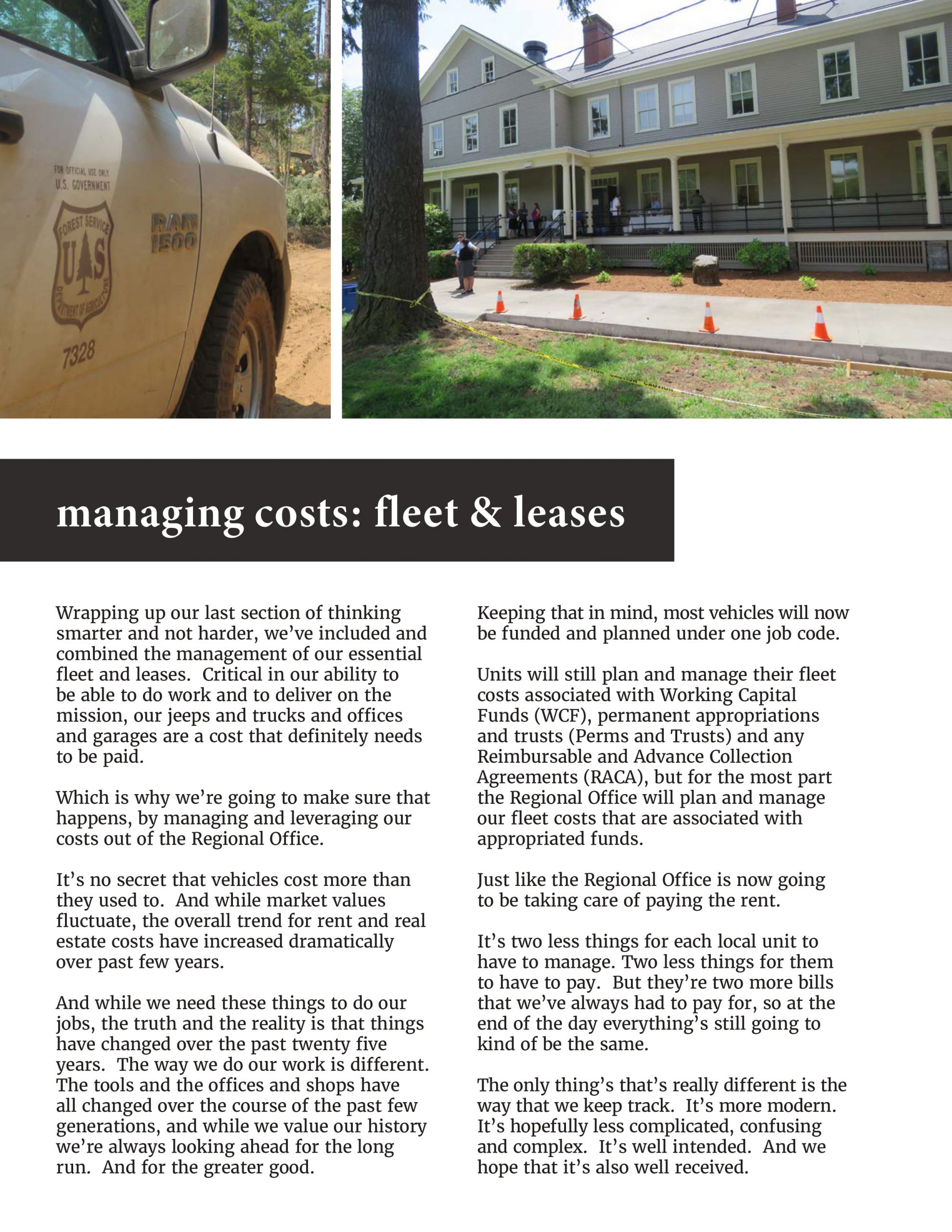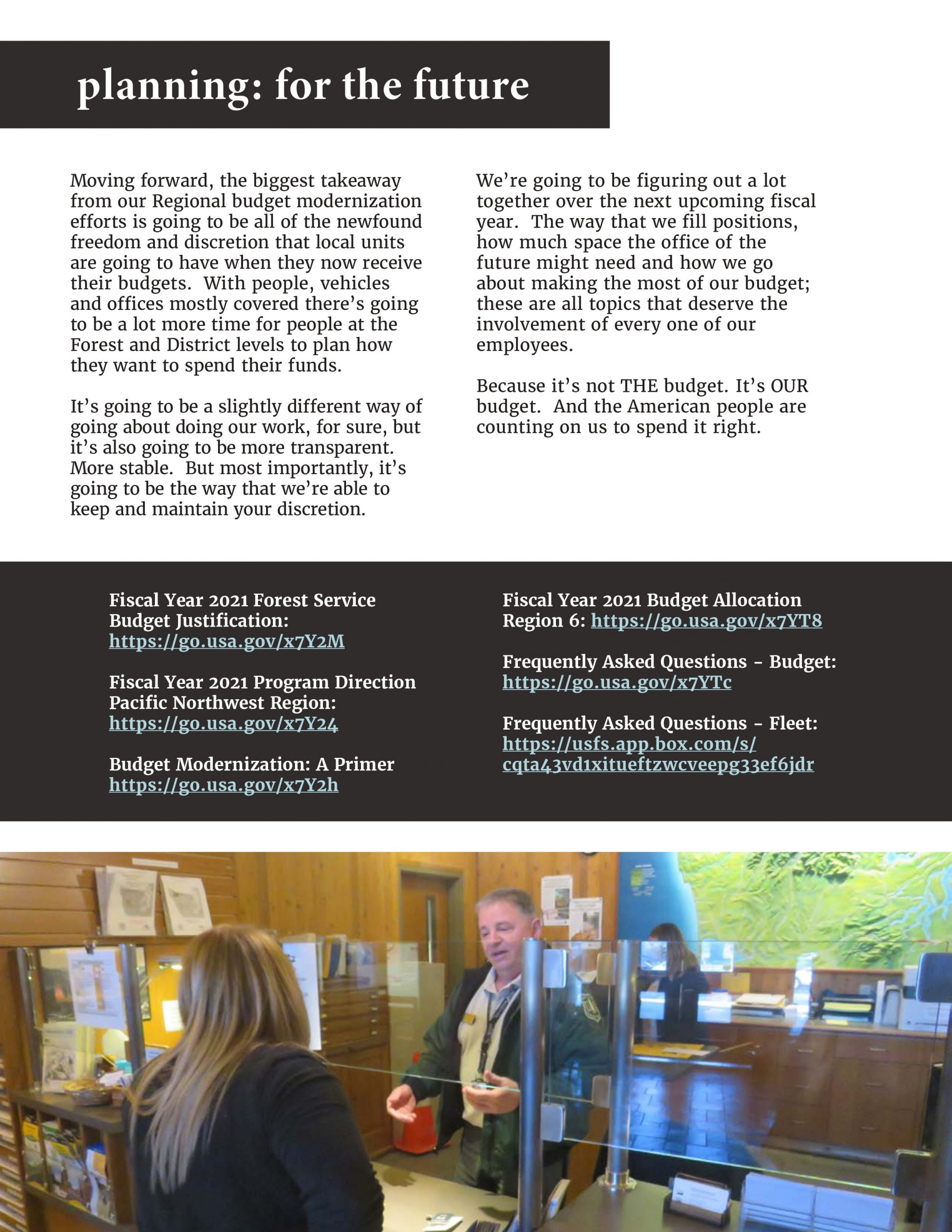Budget Modernization Overview
Background: This was the final product, after condensing down over 800 pages of federal budgetary information. I was the project manager for this publication, and I drafted the language, assembled the layout, and put it all together for the Regional Forester to distribute to over 6,000 Forest Service employees.
Method of distribution: email
Format: pdf
Created in: Adobe InDesign

